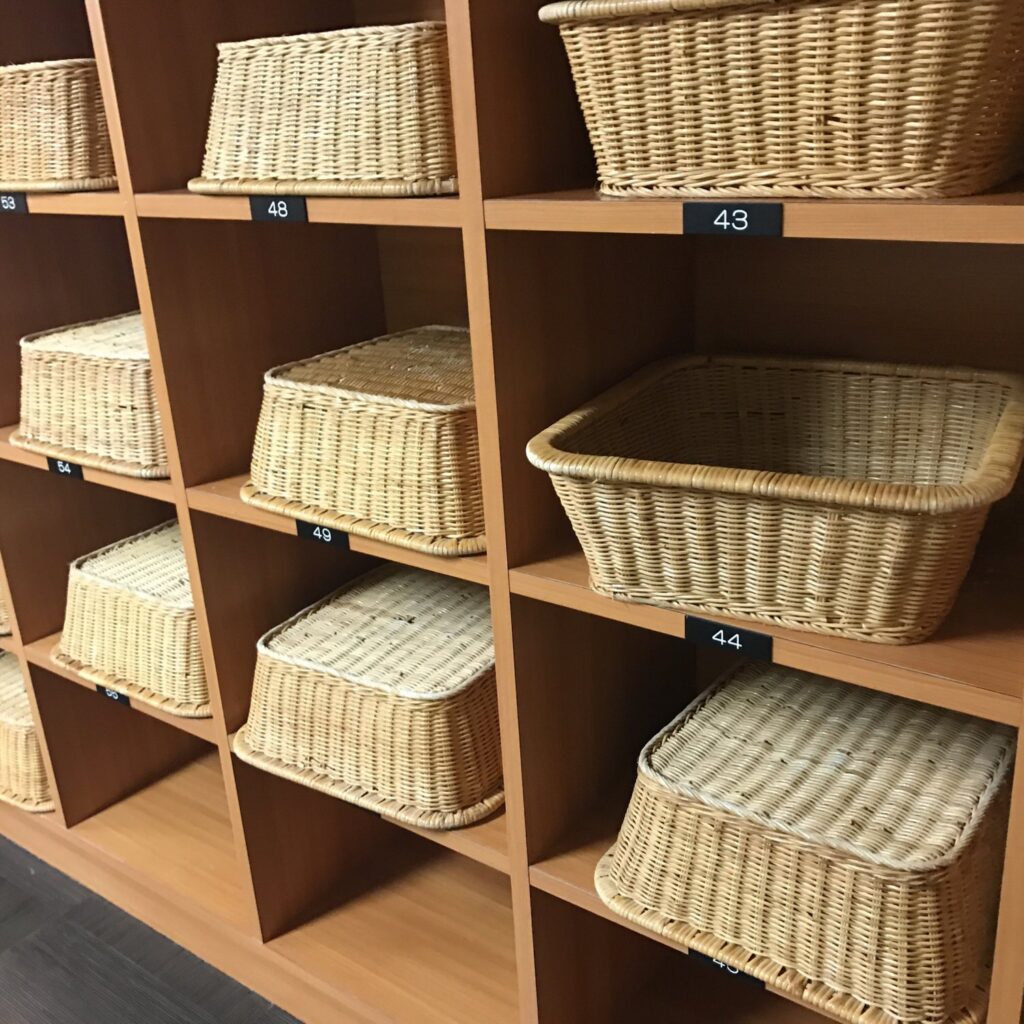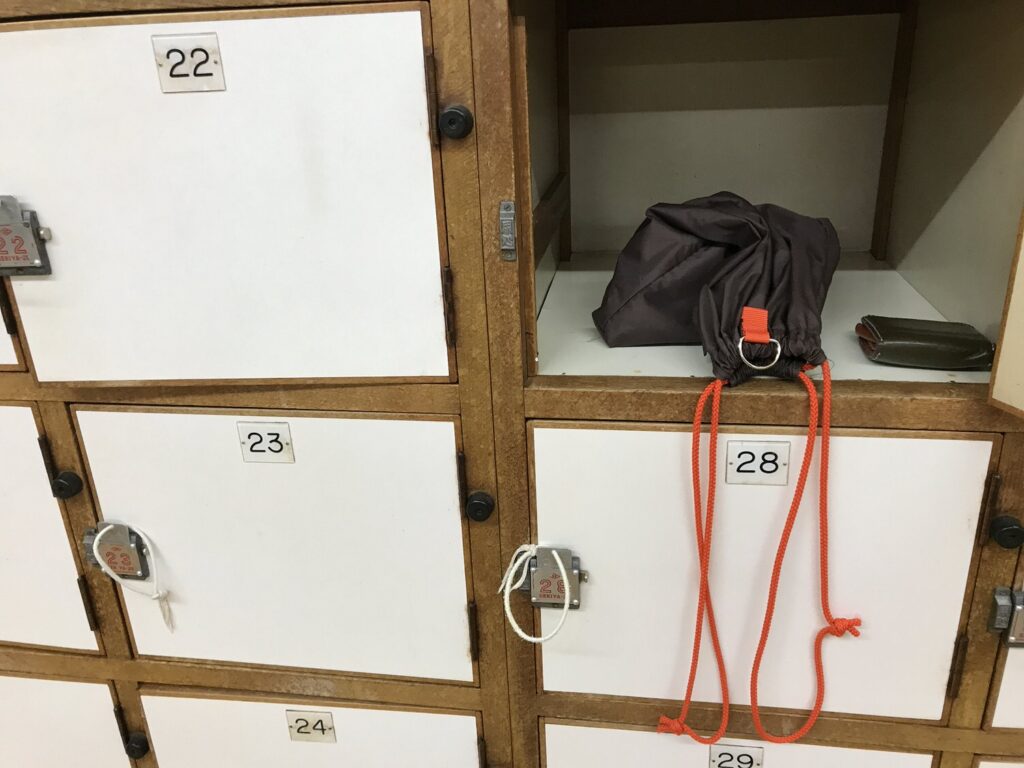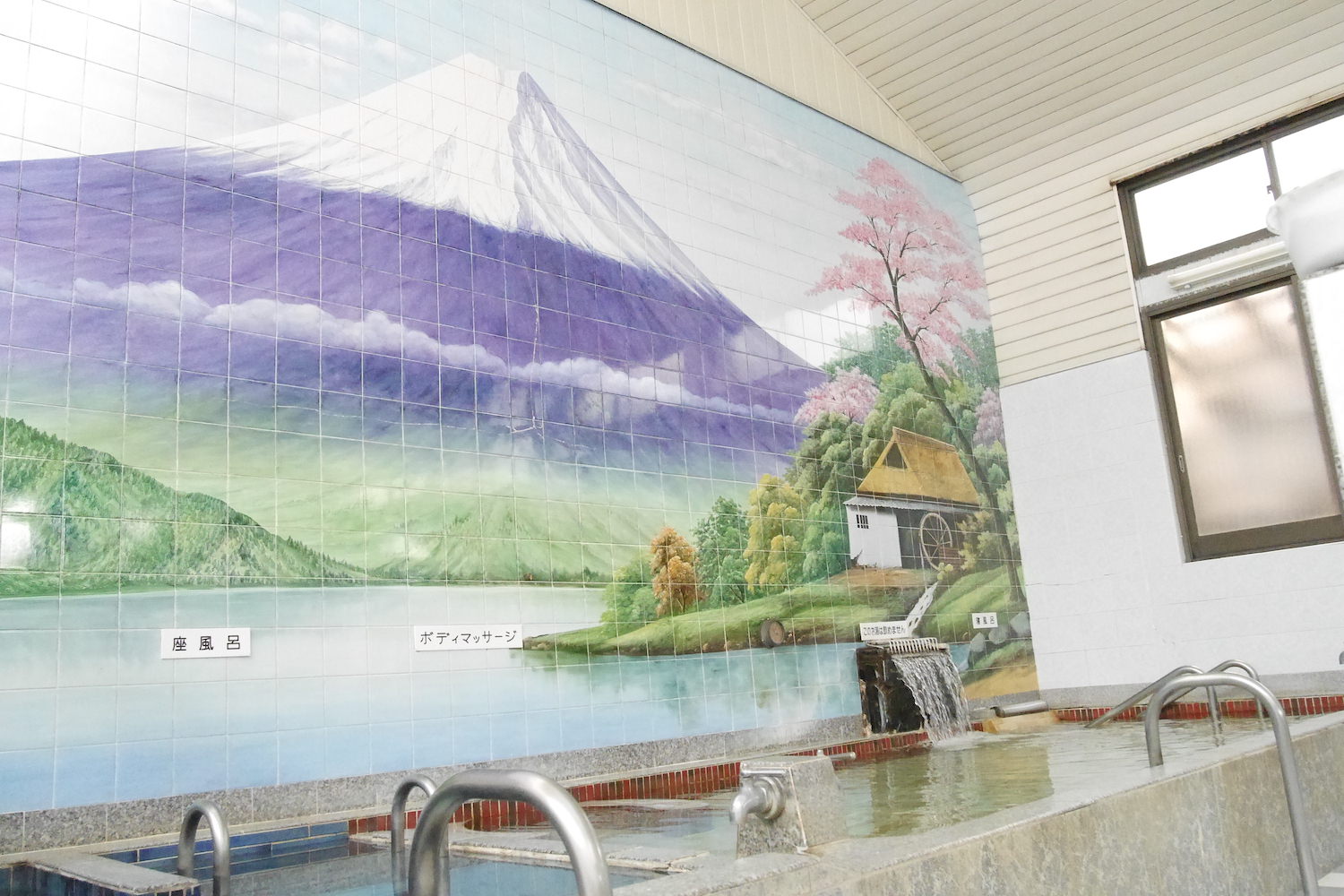
How To Best Enjoy Sentō / Onsen : Etiquettes, Manners and Tips
in Travelling in Japan on May 29, 2021If you are looking to try Japanese Sentō (public bath) or Onsen (natural hot spring), but not sure about the manners? Worry no more! Here is my advise from a native Japanese speaker on what to do and what not to do when it comes to going into those ‘sacred’ places. These etiquettes are the same for both Sentō and Onsen. For those who don’t know the difference between these two, I’ll give a quick explanation for you. Knowing these differences should help you enhance your experience better when you actually try them because you’ll know what to expect at Onsen and Sentō. in a nutshell
- Sentō : Causal local experience
- Onsen : High-end holiday retreat
Sentō vs Onsen : What is the difference?
Sentō is a public bathhouse with ordinary hearted water whereas Onsen is a natural hot spring. Onsen is a PROTECTED word by law and onsen water has to meet a certain criteria to be eligible for that title. Yes, you can’t just simply heat up tap water or well-water and call it Onsen. That’s a fraud. Onsen does not have to be a form of liquid and therefore can be gas or steam. However it has to be either more than 25 degrees celsius when it reaches to the surface, or contains specific substance with specific concentration. Because of these substances, Onsen has some health benefits other than relaxation and therefore its freshness plays an important role.
Sentō, on the other hand, is not restricted to those specifications. It is a public bathhouse where people pay for entrance. Onsen (温泉) has two Kanji characters which means ‘warm’ and ‘spring(water)’ while that of Sentō is 銭湯 and means ‘coin’ and ‘warm water’. Yes, there are Onsen where you don’t need to pay for entrance.
Because there’s no requirements for Sentō water (other than hygienic standard), Sentō can be established pretty much anywhere and this is why you are more likely to find Sentōs than Onsen in urban areas. It’s quite rare to find REAL onsen in the cities.
Onsen = Treat. Sentō = Local experience
In general, Onsen has connotations of a treat, escape from busy life, and staying at traditional Japanese inn(Ryokan) So, Going to Onsen is more than just having a bath. It’s more like a holiday retreat. With the combination of Onsen and Ryokan (traditional Japanese inn), you might be able to feel as if you are in a scene from the movie ‘Spirited Away’
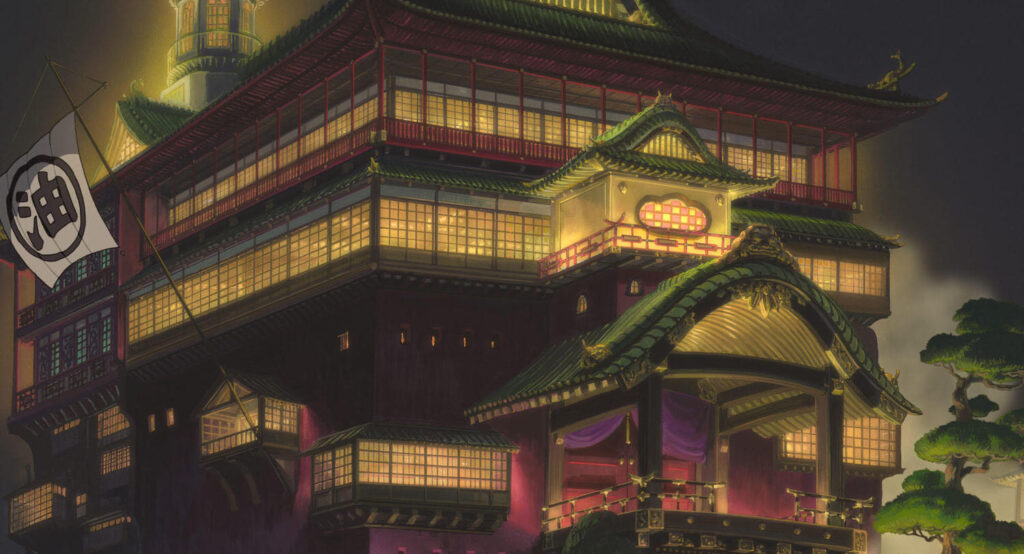
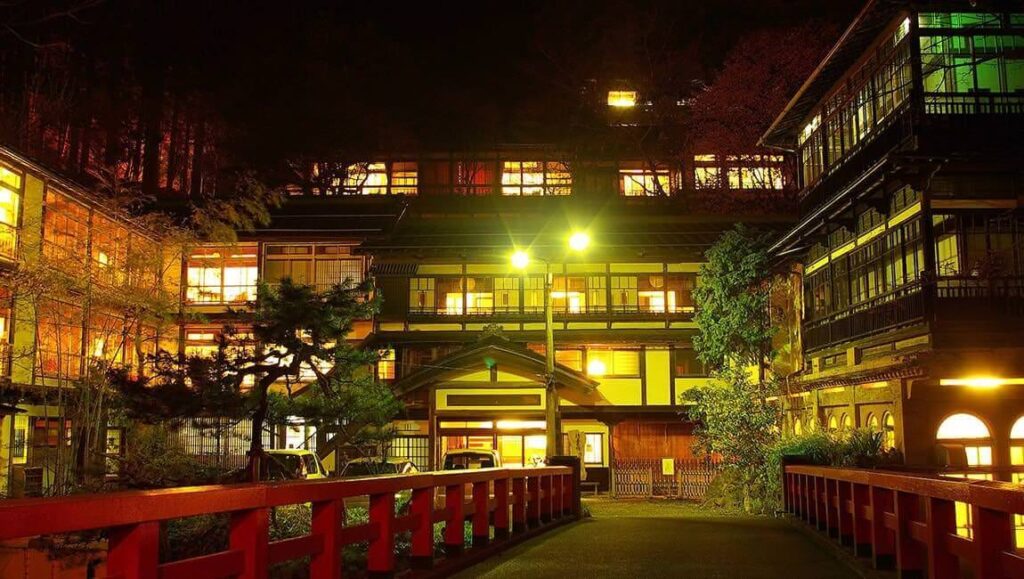
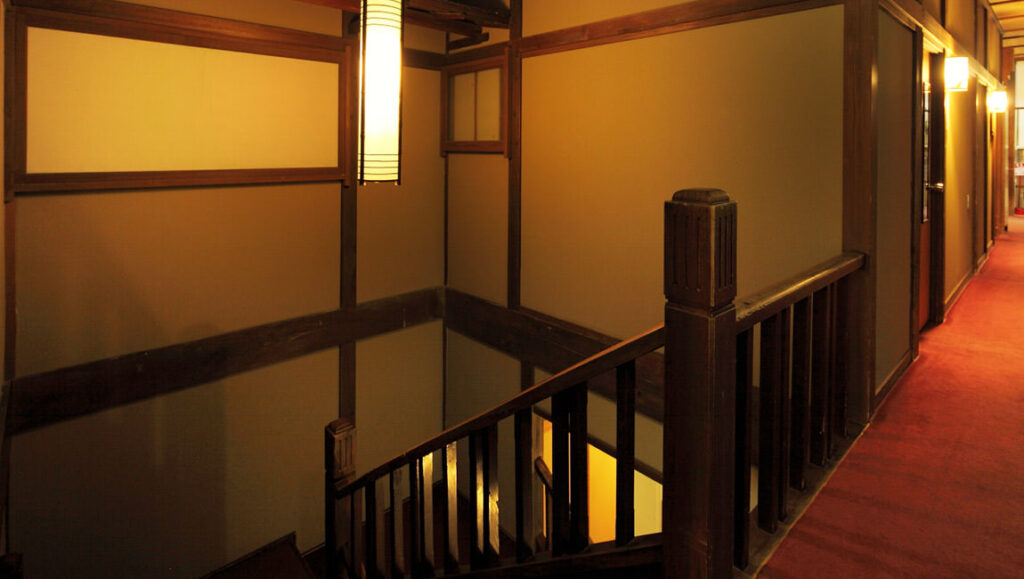
quaint corridor 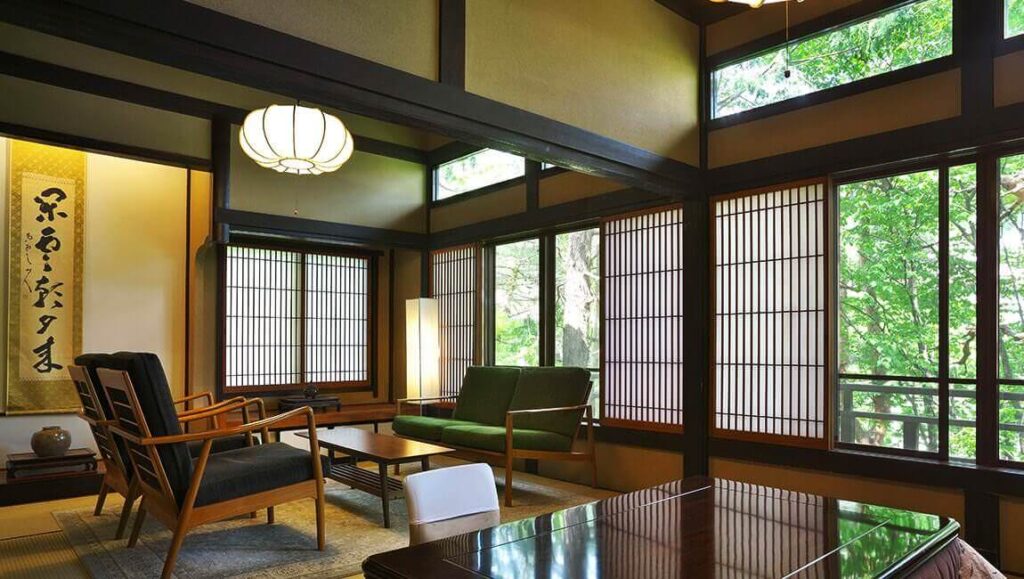
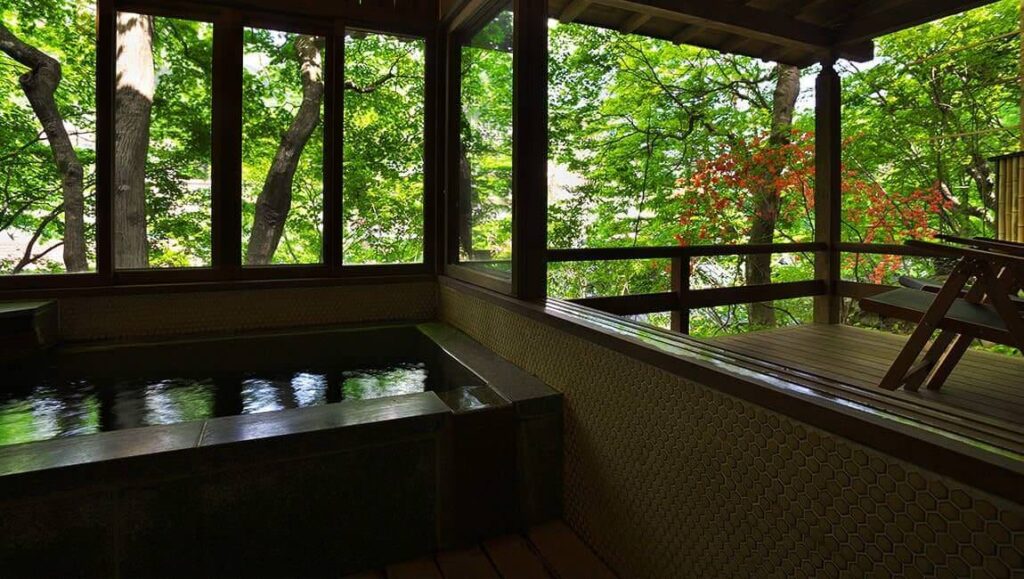
Private Bathroom 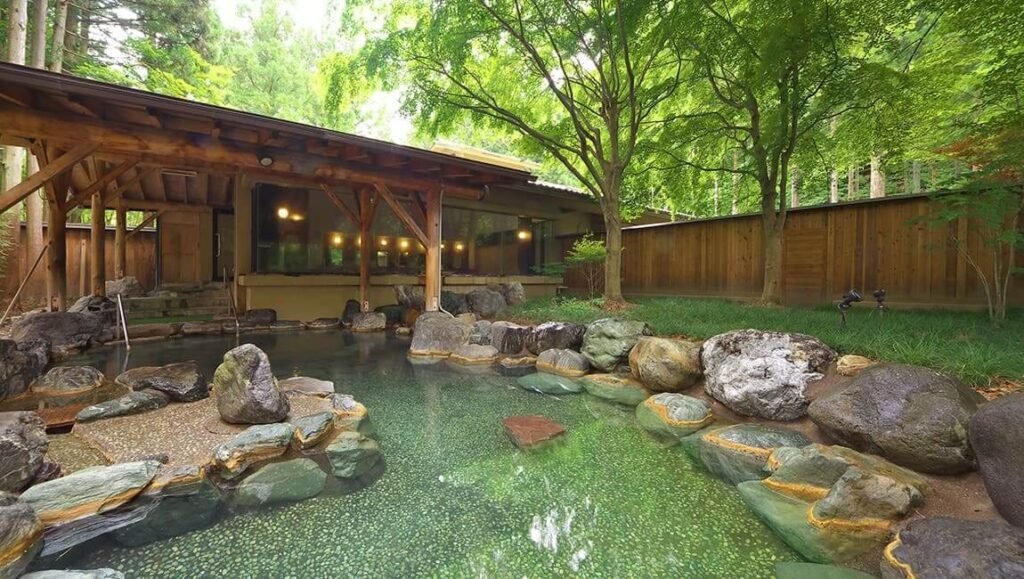
OK, holiday is now over and time to get back to reality. This is what Sentō is for. It’s more like everyday bathhouse for the ordinary Japanese people like me and therefore, you can expect LOCAL EXPERIENCE / Cultural enrichment rather than high-end holiday retreat. If you have played ‘Street Fighter’, you might recognise this.
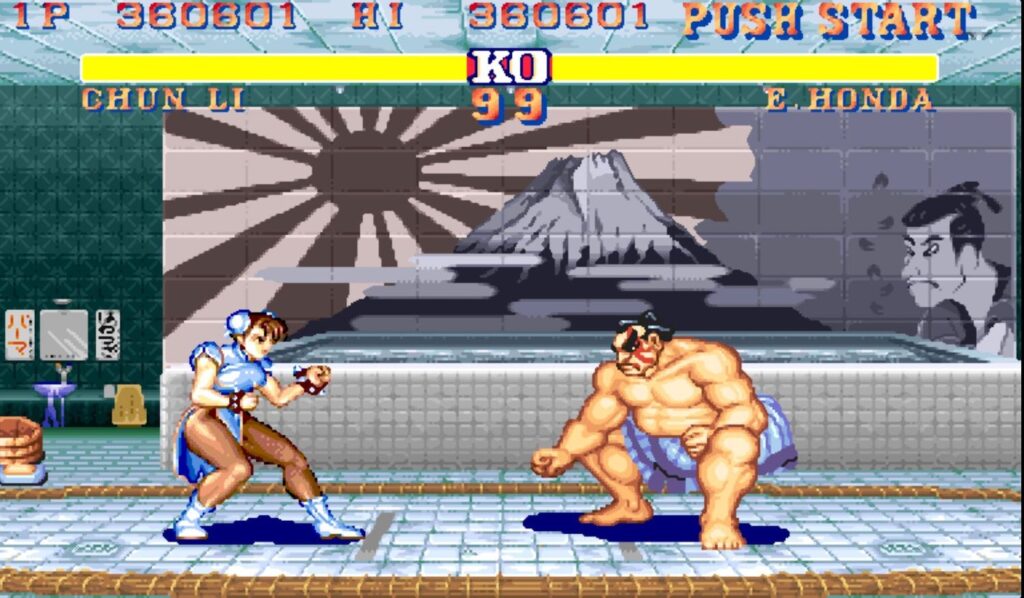
This is what most Sentō look like (Not that people are fighting though..just the background here)
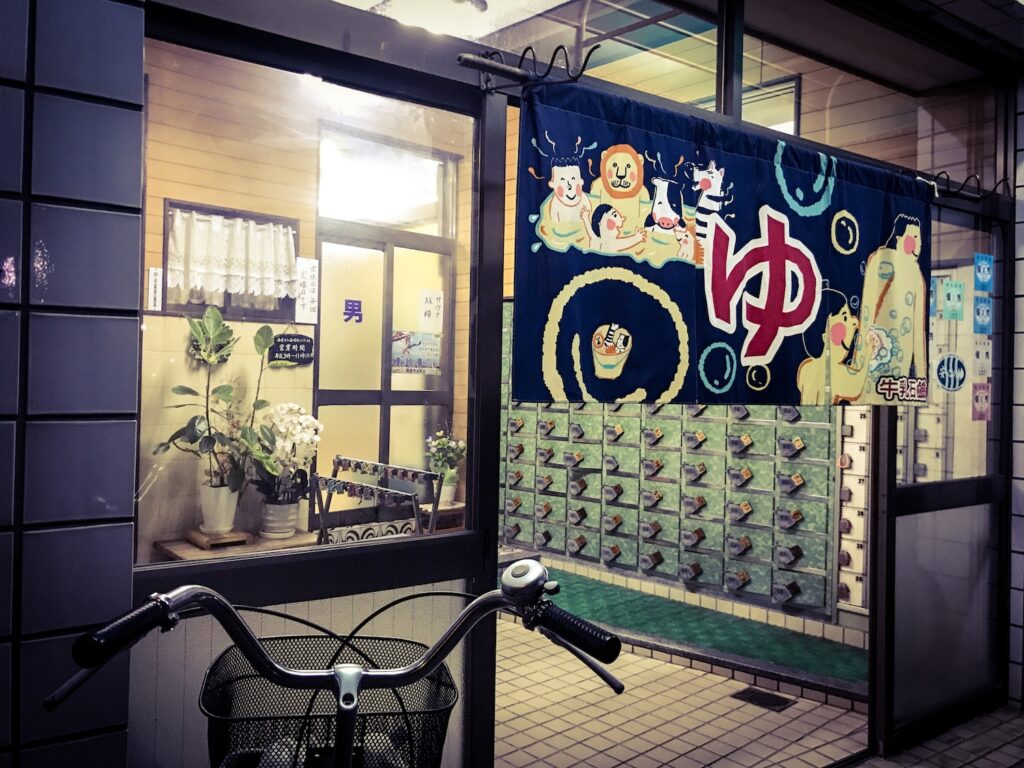
Entrance 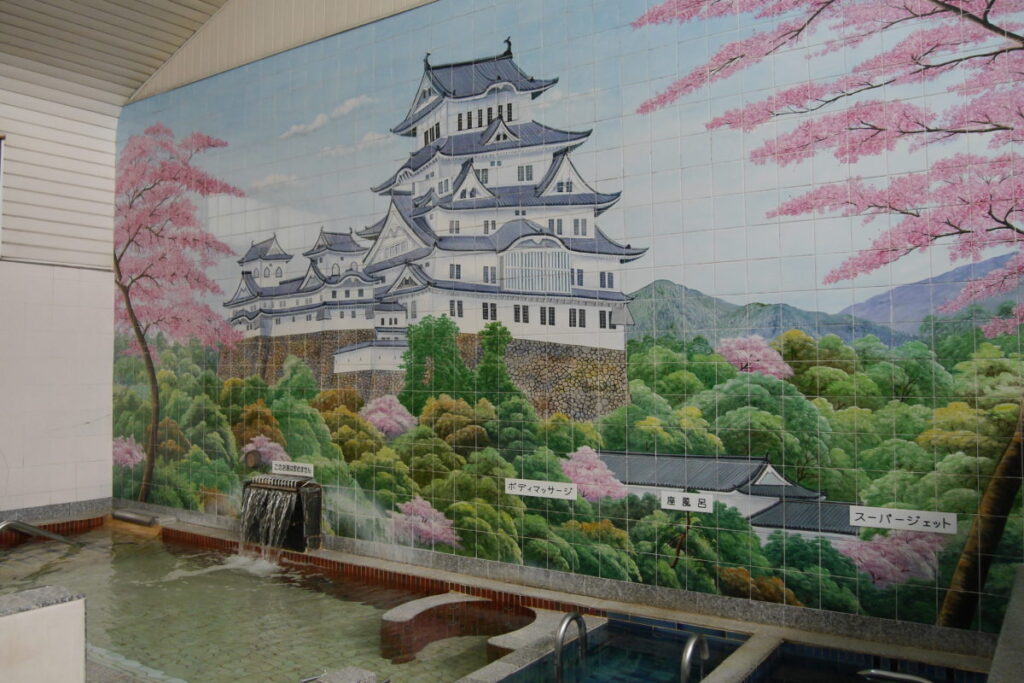
Bath tub 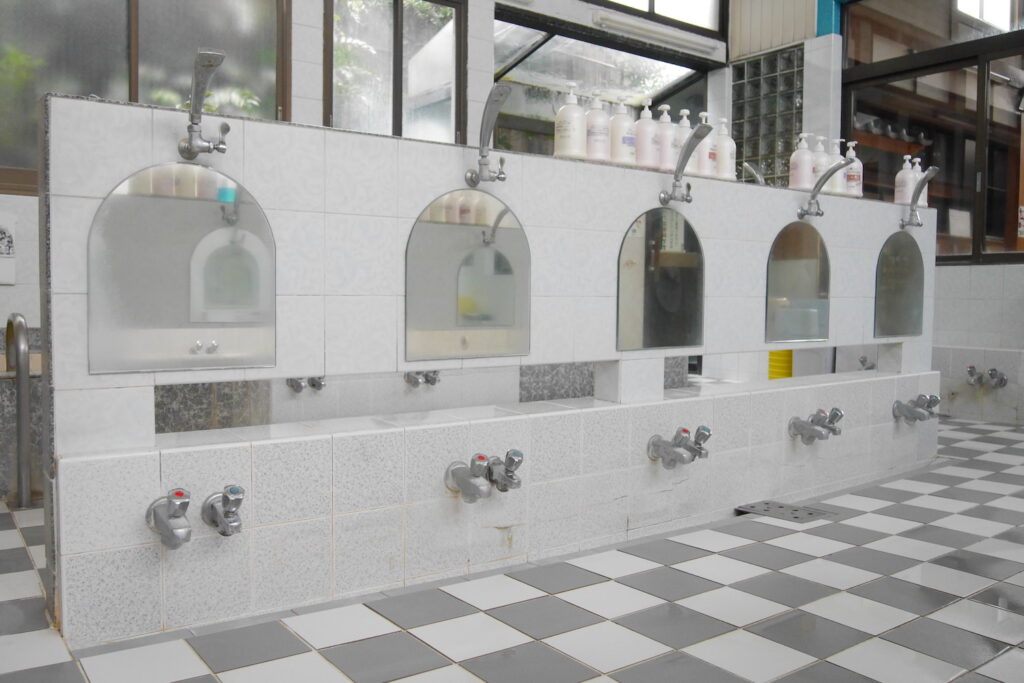
Shower area
Different Attractions, Different expectations
Unlike Ryokan and Onsen in general, sentō is a very casual place and no reservations are required. You just go in, take off your shoes, pay for the entrance at the counter (cash only 400 ~ 600 yen) and that’s it! Just because Sentō uses ordinary water, it does not necessarily mean that Onsen is better than Sentō. You’ll enjoy both but with different experience. Just like going to DisneyLand is different from going to Universal Studio. Different attraction, different expectation. Just like those theme parks, there’s no time limit and you can stay as long as you want at Onsen/Sentō(even until it closes)
Tattoo Friendly Onsen/Sentō
Although tattoo is not commonly accepted among Onsen/Sentō facilities, there still exists tattoo friendly ones. I have gathered those onsen/Sentō locations on Google MyMap so you can find them near you on your smartphone while you are out and about in Japan.
→Tattoo Friendly Onsen/Sentō Maps
Etiquettes and Manners
Now, let’s talk about the manners. Although it might sound daunting at first, you’ll get used to it once you get the hang of it. Manners are highlighted in red. Here is the ‘How-to’ for a typical Sentō.
What to take with you
Although Onsen/Sentō might provides shampoo and soaps in their bathing area, I recommend you take your own things with you.
- Hand towel
- Bath towel(If you want)
- Shampoo
- body soap
- razor
- Cash (coins)
- pumice stone
- scrubbing glove
Here is my Sentō / Onsen gears.
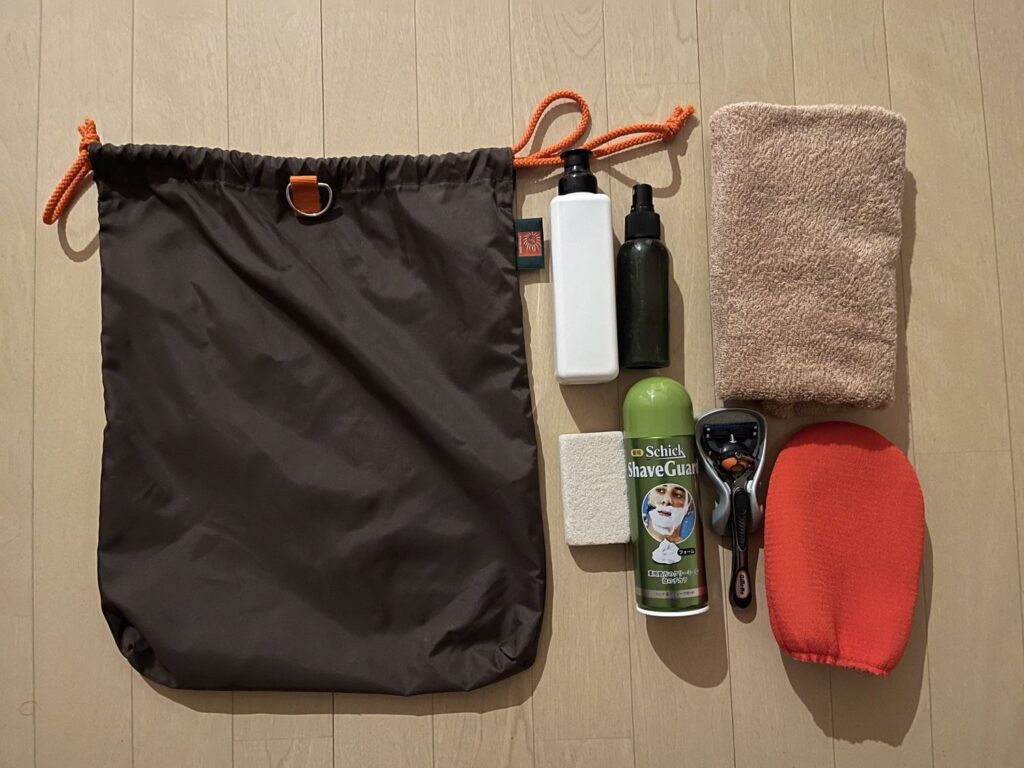
Entrance
A typical entrance has a Noren (Japanese traditional curtain) and looks like this.
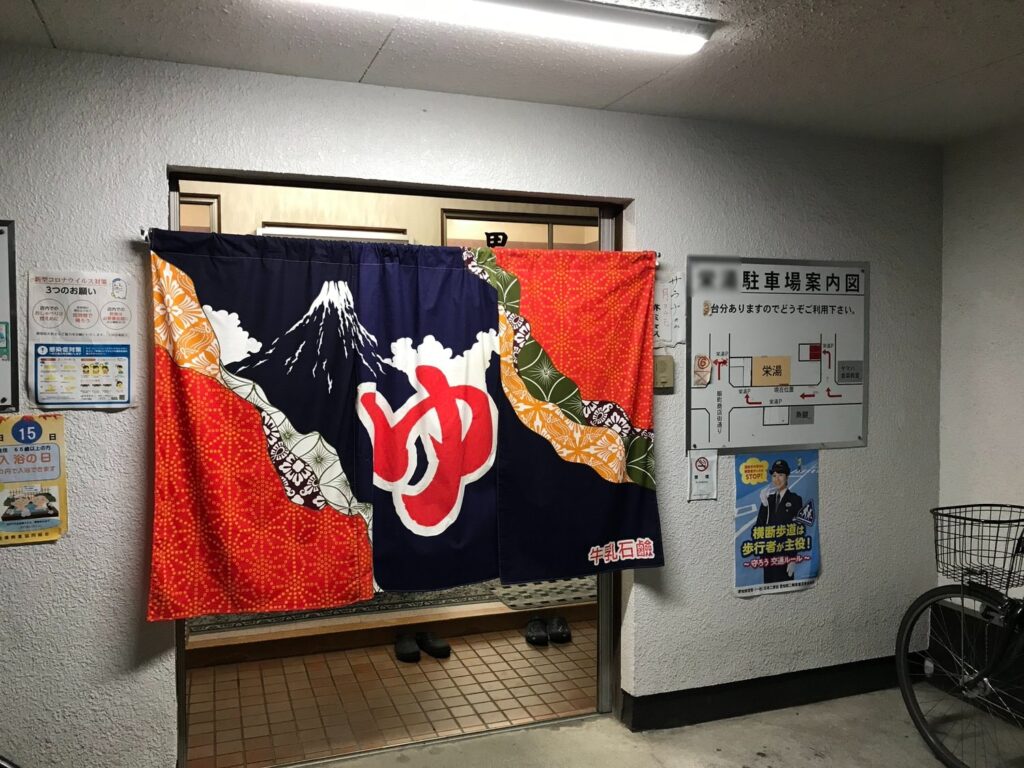
Unless it is mixed gender, you’ll find two entrance gates like this. One for women, one for men.
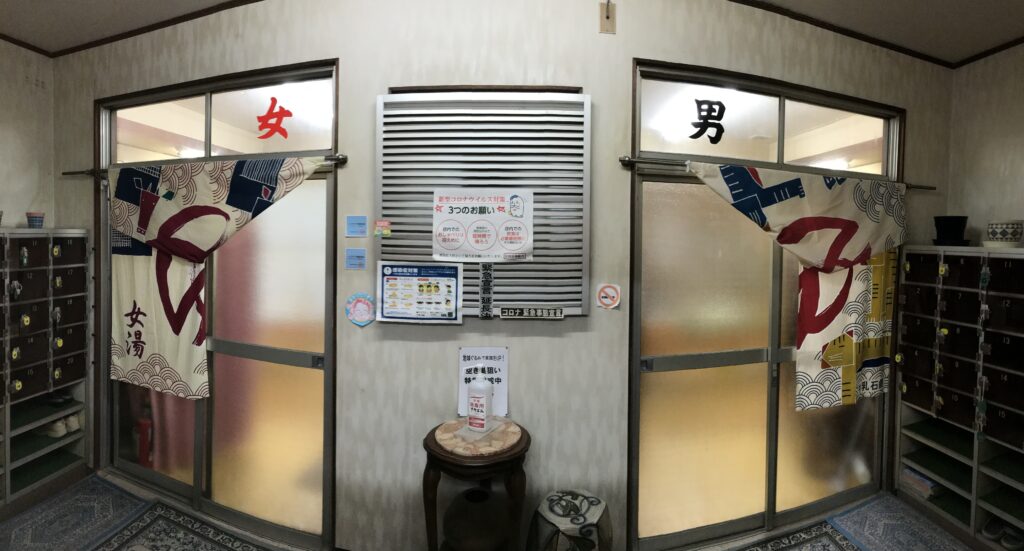
If not sure which one to enter, knock on the door lightly or say ‘Sumimasen’ and staff should come out. ask.
Take your shoes off and put it in the locker.
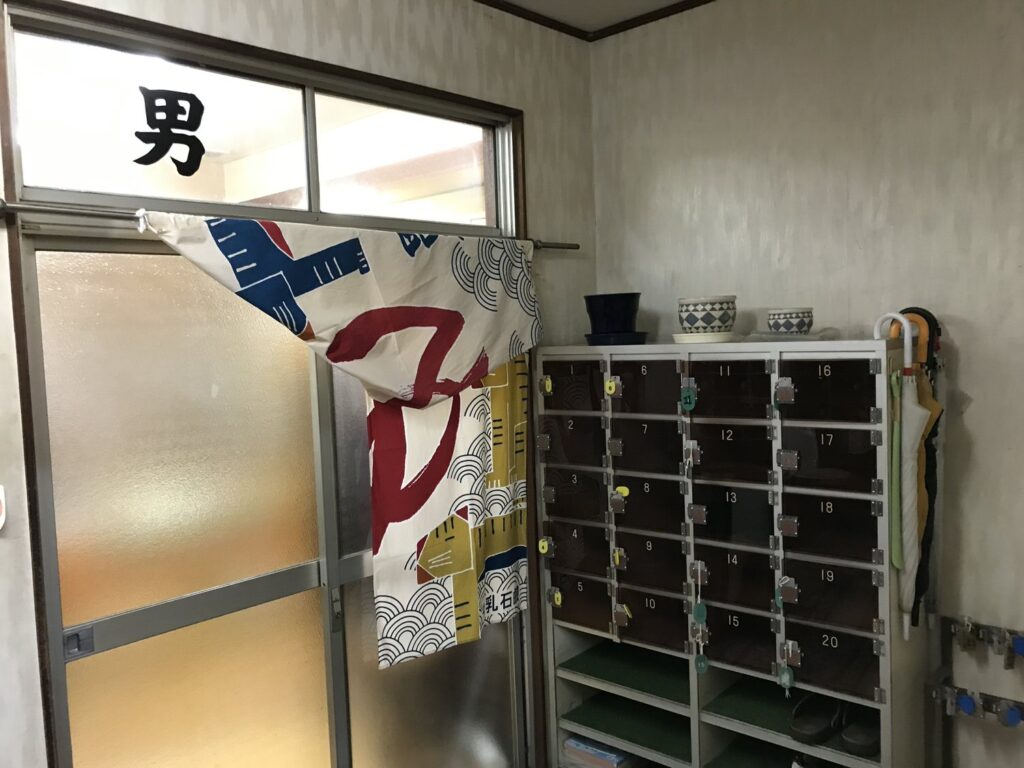
You can pick any locker that’s not been taken.(Some people put their shoes in but don’t lock it) If you can’t be bothered, you can use the shelf too.
Through the door is the changing room. Right after entering through the door, there’s a place for the cashier called ‘Bandai’
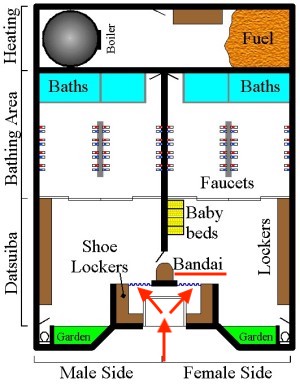
You pay for the entrance to the staff sitting on Bandai. (Usually 400~600yen and cash only)
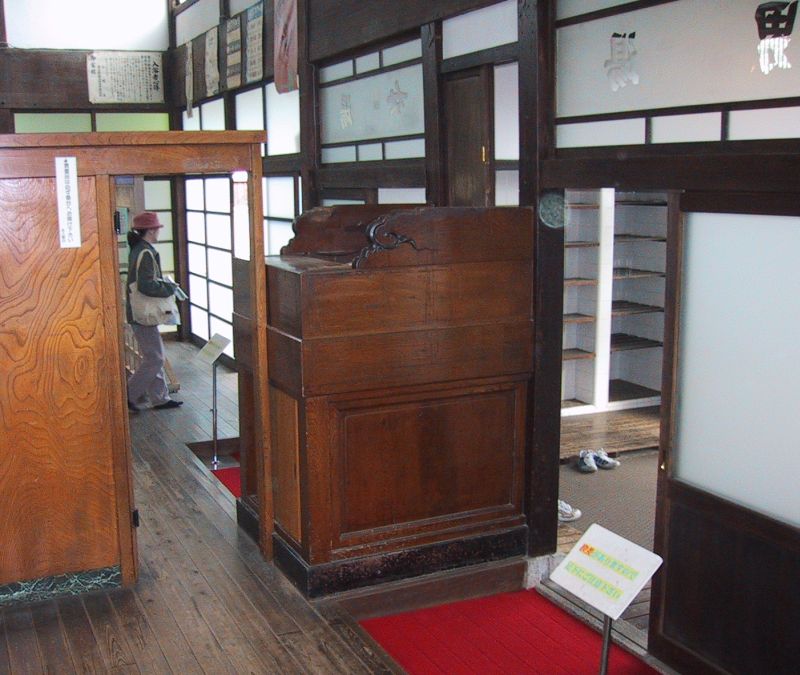
In the changing room
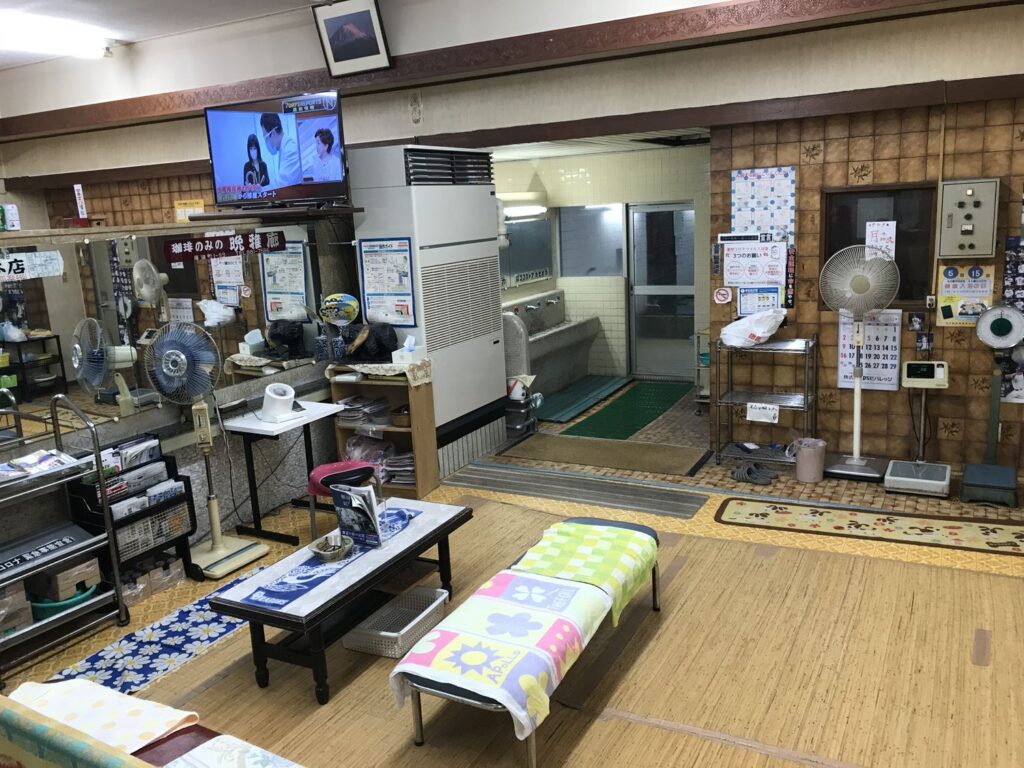
Now you are in the changing room. There are either lockers or shelves with baskets in it.
Take your clothes off and put them in there. Fully naked and no underwear is allowed. One locker/baskets per person. The locker key usually comes with a rubber band so you can wear it just like a wrist band.
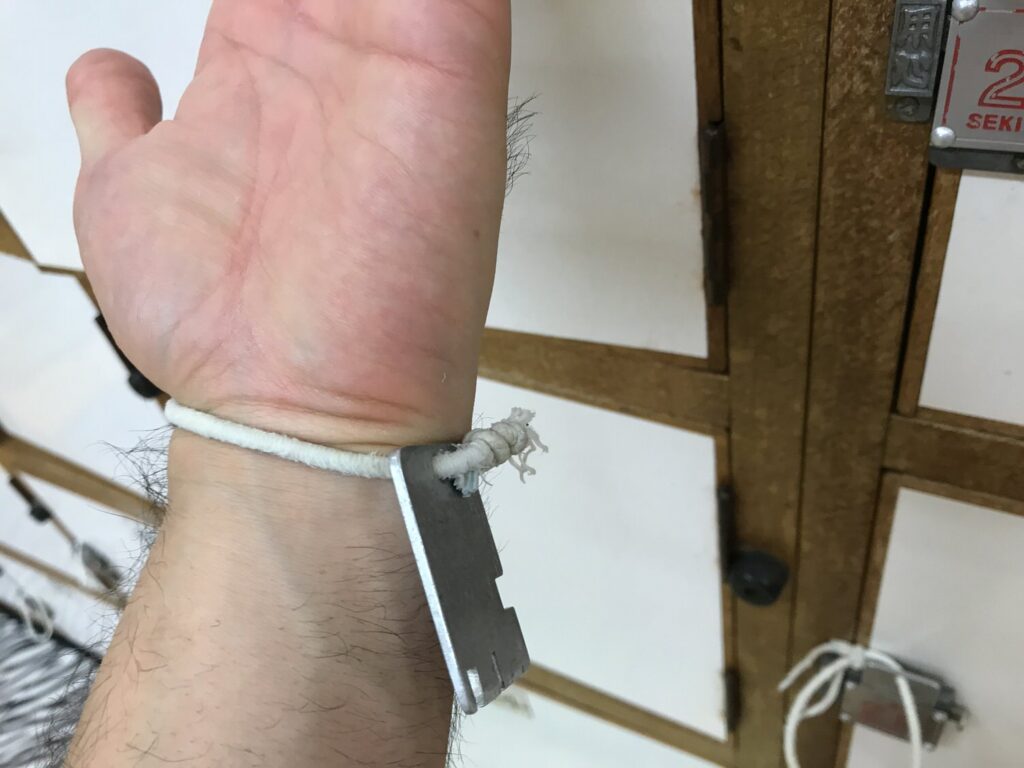
Your bathtowel are not allowed in the bathing room and needs to stay in the locker/basket. However, you have to take your small hand towels with you to the bathing are.
In the bathing area
Once you enter the bathing area, the first thing you must do is to wash your enter body (including hair)
Grab a small stool and pail. Take them to the faucets(tap) area.
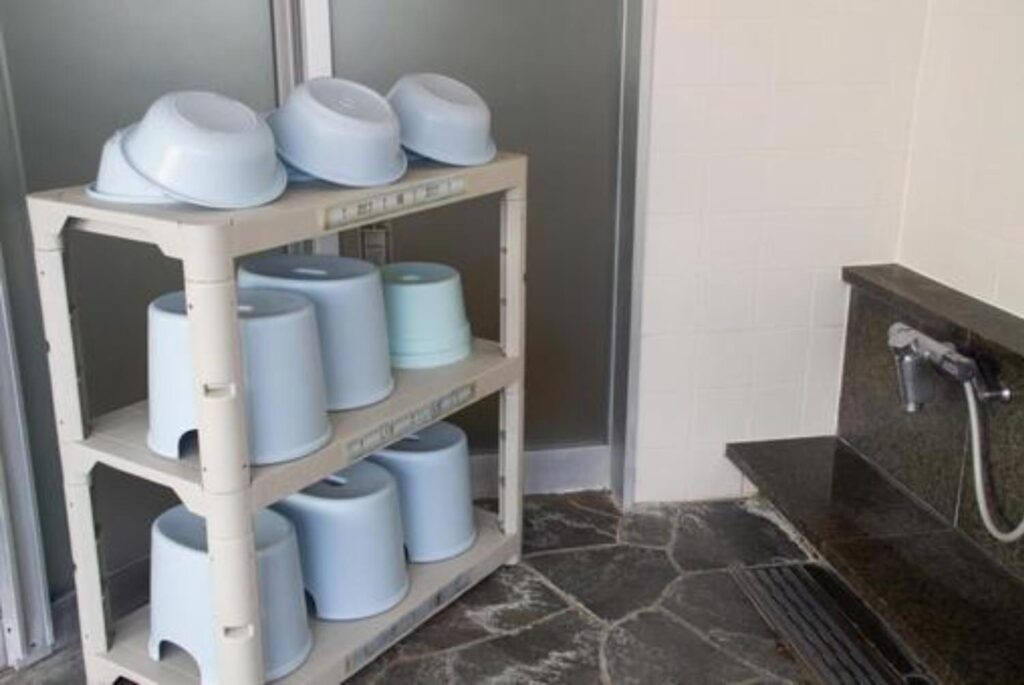

Sit on the small stool and do your washing. You need to remain seated while rinsing off. No standing.
This is because you don’t want to splash one of the people next to you. When you finished, make sure that there’s no bubbles on the floor and the stool, If there is, fill up the pail with some water and wash that bubbles away to the drain. Put your shampoo and soap, etc in the pail and leave it on the shelf. (There’s usually a shelf in the bathing area for this). That way, other people can comfortably use that faucets next. If there’s no shelves for that, just check where other people are leaving their belongings.
Now you are ready to go into the bath tub.
In the bath tub
When you go into the tub, please go in slowly especially if other people are already in there. No Jumping into the bath tub. This is because you want to minimise the wave and not to disturb other people. People are usually up to their neck in the tub. Causing the wave might splash their face.
NO towels under water. I usually put it up on my head.
While some people put their entire body (including head) under the water, I advise you don’t do it. This is because 1 some people find it disturbing, 2 for hygienic reasons for yourself and others. (I’ll talk about the hygienic issues in another post as this is a very complex subject, so complex that even very few Japanese have a good understanding of it..)
Once you are happy with the experience and ready to go back to the changing room. There’s one thing you must do before going back to the changing room. You need to towel dry your entire body, just to get rid of any water drops on your skin. That way you won’t be watering the floor in the changing and causing puddles.. Also make sure to wring out the towel too. You might find basins for wringing out your towel.
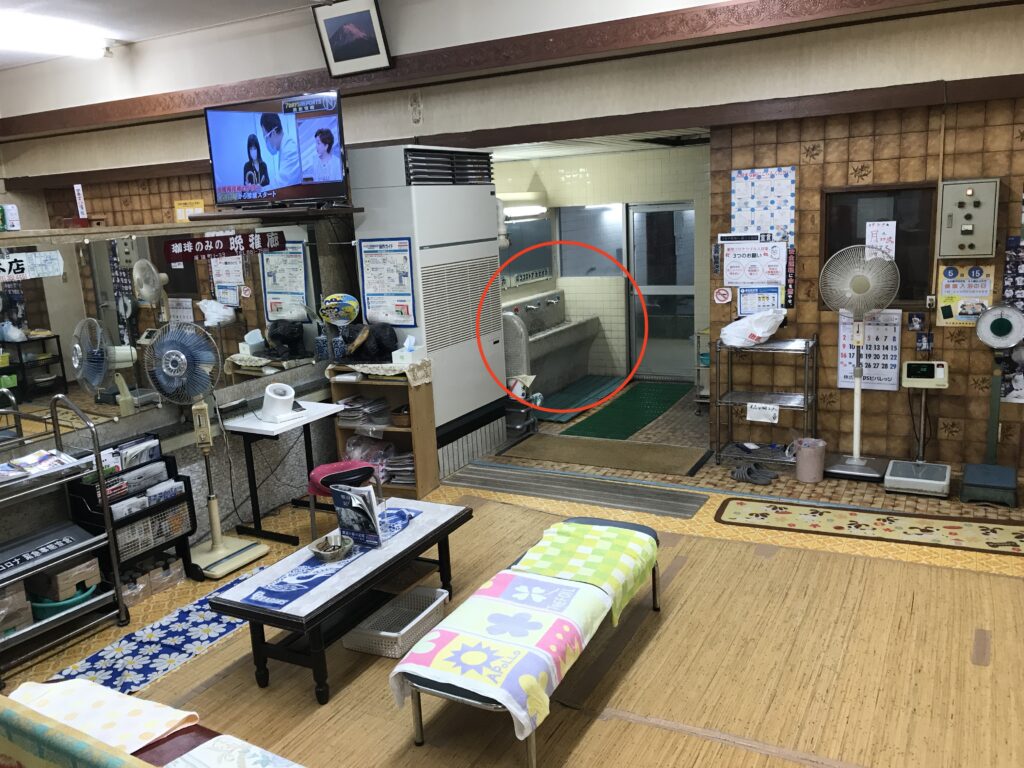
No water drops ? Now you are allowed to go back into the changing room.
Back in the changing room
Back in the changing room, you go back to your locker and take out the bath towel and completely dry your body. You do not need to rush putting your clothes back on. If you feel you need to cool down a bit, put your underwear on, sit on a bench or stand in front of a fan.
Tips to enhance your experience
Beer for adults and Coffee Milk/Ramune for kids are the classic after-Sentō drink that helps you cool down and hydrate. These drinks are usually available at any Sentō or Onsen.
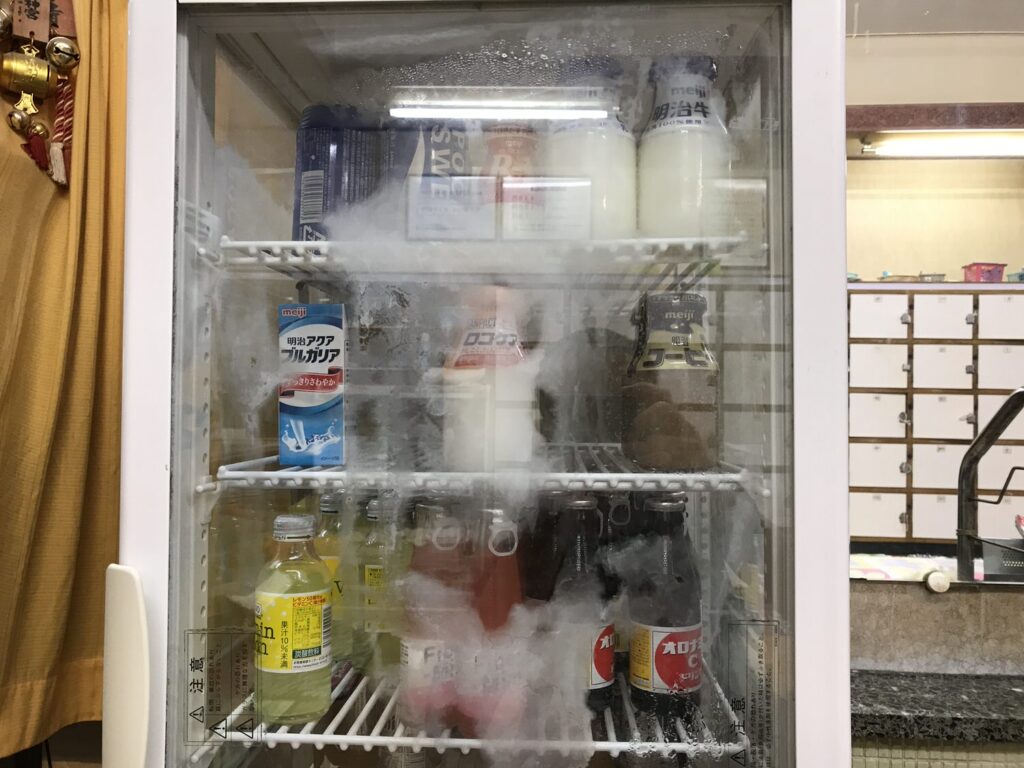
I used to love coffee milk myself when I was a kid. But now, I drop by at a convenience store, buy an ice cream, and enjoy it while walking on the way back home. Ice cream tastes soo good when your body is warmed up nicely. Also you’ll feel the nice breeze at night in summer.

